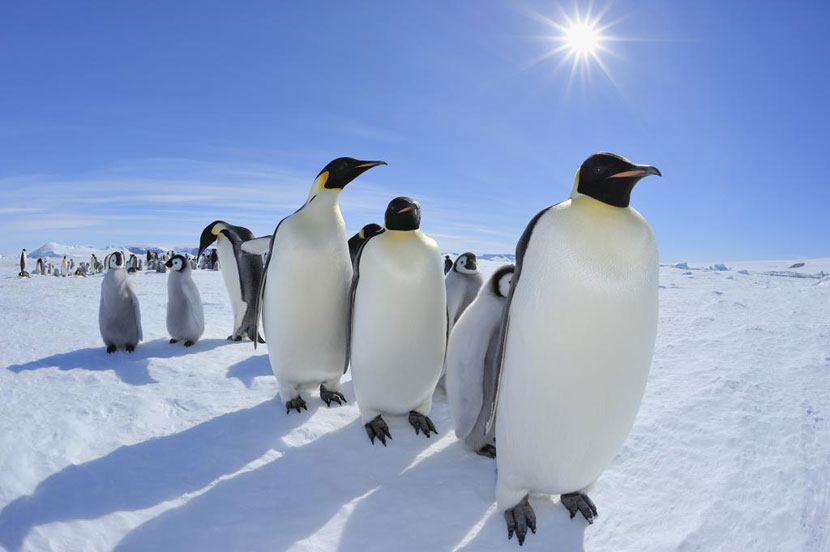Thursday, December 1, 2022

Though freezing temperatures and gale force winds make Antarctica one of the planet’s harshest environments, an increasing number of people are visiting the continent each year — a trend that could negatively impact some penguin species and their habitats.
A recent study published by NC State researchers in the journal Antarctic Science found that common tourism activities and behaviors could be disturbing chinstrap and gentoo penguins on one of the continent’s most-visited islands.
Yu-Fai Leung, co-author a professor of parks, recreation and tourism management at the College of Natural Resources said that some visitor guidelines might need to be more conservative during the early stages of the breeding season.
Tourism in Antarctica is self-regulated by the International Association of Antarctica Tour Operators (IAATO), which was founded in 1991 to advocate and promote the practice of safe and environmentally-responsible private sector travel to Antarctica.
Commercial tourism in Antarctica began in the 1960s.
In an effort to protect Antarctica’s wildlife and natural resources, IAATO requires tourists to adhere to strict guidelines throughout the duration of their expeditions.
For example, tourists must maintain a minimum distance of 15 feet from nesting penguins.
Most scientists agree that IAATO’s guidelines have worked well since they were set up, but some worry that Antarctica’s increasing popularity among tourists could eventually result in ecological consequences for penguins, which are the key attraction to Antarctic tourists.
Antarctica’s tourism season lasts from November to March, coinciding with the breeding season for both chinstrap and gentoo penguins.
Chinstrap penguins generally lay eggs in November and December, while gentoo penguins lay eggs in November.
From December 2019 to January 2020, Leung and his collaborators, including Daniela Cajiao, a postdoctoral visiting scholar at NC State, visited Barrientos Island in the Antarctic Peninsula to investigate the differences between chinstrap and gentoo penguins in their behavioral responses to simulated tourists’ activities.
The researchers performed both passive behaviors (no talking or movement) and active behaviors (talking and walking) at various distances and speeds near more than a dozen nesting sites at two of the island’s primary landing areas for tourists.
Upon reviewing their data, the researchers found that chinstrap penguins demonstrated higher levels of anxiousness and defensiveness in response to passive and active behaviors, though both species demonstrated some level of distress to active behaviors at distances of 6.5 feet and 15 feet.
Chinstrap penguins can become defensive rather quickly when humans approach their nesting sites, at least more so than gentoo penguins, Leung said.
But really, both species are sensitive to some level of human presence.
The findings come at a time when Antarctica’s tourism industry is booming. During the 2019-20 tourism season, the continent received 75,000 visitors.
IAATO expects that figure to exceed 100,000 in the 2022-23 season.
Simultaneously, some of Antarctica’s chinstrap penguin colonies have declined by up to 77% since 1971, with the total population on Elephant Island dropping from 122,550 breeding pairs to 52,786 in January 2020, largely due to climate change.
A growing body of research suggests that tourism development, too, can negatively impact wildlife and other natural resources when left unmanaged.
In the case of Antarctica’s penguins, the growing number of visitors could increase the risk of chick mortality.
While tourists typically only spend a few hours on land, their presence could cause adult penguins to become scared and distracted, and sometimes even temporarily desert their chicks or eggs, leaving them vulnerable to exposure or predation, according to Leung.
It can be exhausting for these penguins when tourists are standing around their nesting sites for several hours a day, Leung said.
As new visitor sites are likely to open across Antarctica amid increasing demand, it’s crucial for IAATO to continue evaluating the effectiveness of its visitor guidelines to safeguard the continent’s penguins, according to Leung.
IAATO has to balance tourism demand with conservation needs. Their goal is to conduct safe, sustainable tourism in the Antarctic. It’s just a matter of managing those two priorities, Leung said.
Leung added that the expansion of the minimum viewing distance between tourists and nesting sites could alleviate potential impacts on chinstrap and gentoo penguins during the early stages of the breeding season, though further research is needed.
Barrientos Island is among the 15 most commonly visited sites in the Antarctic Peninsula.
Barrientos Island has been heavily visited by tourists since 2005 so the penguins could be adapted to people already, Leung said. Our results might be conservative.
Currently, Leung and his collaborators are using remote cameras and field observations on Barrientos Island to monitor whether tourists comply with the minimum viewing distance of 15 feet.
The study has resumed after interruptions by the COVID-19 pandemic and will entail further data collection during the next Antarctic tourism season.
Leung, Cajiao and other researchers from around the world also recently formed the Antarctic Tourism Action Group under the Scientific Committee on Antarctic Research, which serves as a platform for researchers from different disciplinary perspectives to work together collaboratively and make science-based recommendations.
Saturday, April 20, 2024
Saturday, April 20, 2024
Friday, April 19, 2024
Saturday, April 20, 2024